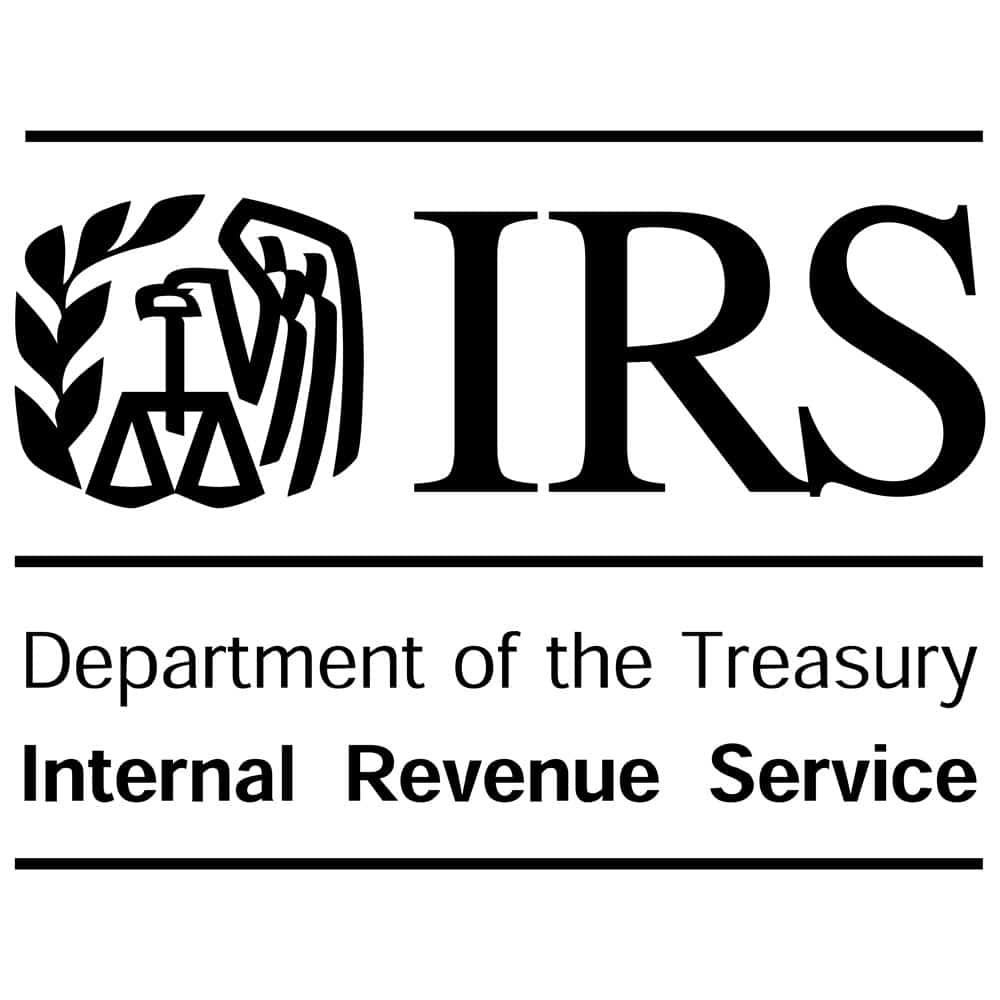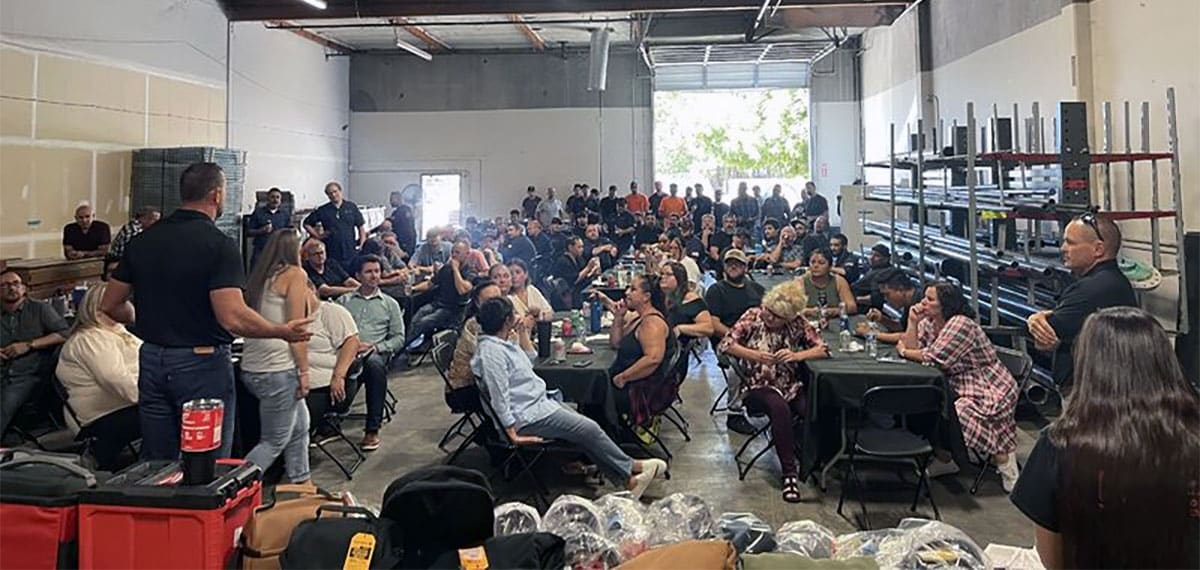The First ESOP (1956)
San Francisco lawyer and economist Louis O. Kelso created the first employee stock ownership plan (ESOP) in 1956 as a way to transition ownership of Peninsula Newspapers, Inc. from its two founders (both then in their 80s) to their chosen successors, the managers and employees.
Kelso had long believed that the company’s own employees should be the logical buyers and the ultimate owners; they were the ones who made the business successful in the first place, and the ones who knew the ins and outs of the business better than anyone else in the industry.
The two founders had long wanted their employees to inherit ownership. They had promised that when the time came for them to retire, the employees would have the first right of refusal. They had seen too many of their competitors gobbled up by large newspaper chains, and they had seen the effects of these acquisitions: key employees laid off, the identity of the company obliterated, and reductions in quality across the board to cut costs.
But how could the employees possibly come up with enough money to buy the business? Actuaries had already determined that if employees cut their costs to the bone, borrowed all they could from friends and relatives, and mortgaged their homes to the hilt, they could only manage to pay the interest, but never the principal itself.
In reviewing the situation, Kelso noted that the company had for many years been making annual contributions to a traditional IRS tax-qualified profit-sharing plan, and that the accumulated funds were more than sufficient to make the 30% down payment. This issue of the Journal went to press in April 2010. Granted, if these funds were used to buy 30% of the company, the employees would risk losing a major portion of their retirement funds. However, this was certainly better than losing their homes. After considering the fact that an outside buyer would terminate many of the company’s employees, both owners and employees agreed that it made sense to invest a large portion of these funds to perpetuate the business.
One problem still remained: how to stretch the company’s cash flow so as to cover the payments on the bank loan. One possibility was to stop making contributions to the company’s profit-sharing plan, thus creating additional cash that could be used for debt service. Then Kelso had a unique idea. Instead of having the company borrow money and then repay the principal with after-tax dollars, why not have the profit-sharing plan itself borrow the money and repay both interest and principal out of the annual contributions the company was already making to the plan? Granted, the company would need to substantially increase the amount of these contributions, but as they were tax deductible, the net effect would be to repay both the interest and principal with pretax dollars.
The projections confirmed that this structure would work. There was one last problem: nothing in the Internal Revenue Code (the Code) authorized the leveraging of an IRS tax-qualified retirement plan. In fact, the 1954 Code specified just the opposite, i.e. any borrowing by an IRS tax-qualified plan from the plan sponsor or other related parties was a “prohibited transaction.”
The Code, however, did permit companies to obtain an exemption from the confines of a prohibited transaction if, on a case-by-case basis, the taxpayer could prove to the National Office of the IRS that the transaction was arms-length and in the best interests of the participants.
Kelso, being the persuasive lawyer that he was, secured the necessary exemption and fathered the world’s first ESOP in 1956, although that term did not come into common use until 18 years later. Peninsula Newspapers, Inc. made itself into the paradigm of an employee-owned company. Over the next 25 years it prospered and paid out millions of dollars of benefits to its participants prior to being acquired by a much larger newspaper conglomerate.
Employee Ownership Prior to ESOPs (1921-1956)
The concept of employee ownership certainly did not originate with Louis Kelso, nor did the idea that employee stock ownership can measurably increase employee incentives and productivity. Prior to Kelso, there were many successful companies, both public and private, that relied heavily upon employee stock ownership to increase employee motivation and productivity, among them such well-known names as Sears Roebuck, J.C. Penney, Proctor & Gamble, Lowe’s, Pillsbury, and many others. Some of these companies provided stock ownership through the vehicle of a stock bonus plan, an IRS tax-qualified plan “designed to be primarily invested in shares of company stock” that was added to the tax code in 1921. Companies, such as Sears Roebuck and Lowe’s, simply invested more than half of the funds in their profit-sharing plans in shares of company stock.
What Kelso Originated
What Kelso did originate was the idea of using an IRS tax-qualified plan as a tool for business succession. Before Kelso, no one had ever thought of this, despite the fact that a qualified plan has all the necessary elements to perpetuate a business, including that it benefits all employees (not just a select few) and holds the stock in trust as a long-term benefit while providing a multitude of fiduciary protections, some by statute and some under common law principles. Prior to Kelso, the retiring owners of a business had only two options. They could either sell the business outright to a competitor, or they could sell a portion of the business to a few key employees and then have the company redeem the remainder.
Both of these options had substantial disadvantages. As Peninsula Newspapers, Inc. illustrated, selling to a competitor enables an owner to cash out his/her shares, but the business itself is usually absorbed into the buyer’s business and loses its identity. Likewise, a stock redemption enables an owner to cash out, but repaying the debt takes many, many years to complete, since the debt must be repaid with after-tax dollars. Another possible exit vehicle is an initial public offering, but few private companies are large enough to make this route attractive.
Other Early ESOPs (1956–1974)
The first several ESOPs that Kelso designed were similar to the Peninsula Newspapers model. In these cases, the ESOP bought 100% of the company as an alternative to selling the company to a competitor. But Kelso soon realized that the ESOP provided flexibility vastly superior to an outright sale to a third party or a total redemption, i.e., the ESOP could purchase any portion of the stock periodically according to need.
Thus, for example, if one shareholder much older than the others wanted to retire, it would no longer be necessary to put the company up for sale. The ESOP could simply purchase the older shareholder’s stock. Similarly, if all the owners wanted to cash out some shares without selling the whole company, the ESOP could offer to purchase a certain percentage of everyone’s stock on a pro-rata basis. This process could be repeated every few years if the shareholders wanted a gradual exit from the business.
Compare this with an outright sale where the seller, because he/she is selling the entire business, must pick the most opportune time. Contrast this with a stock redemption where the owner is usually required to have a “substantially disproportionate” redemption in order to avoid having the proceeds taxed as a constructive dividend rather than as capital gains. An ESOP completely avoids this problem. Because an ESOP is a legal entity separate from the company, any sale to an ESOP, even a pro-rata sale, automatically qualifies for capital gains treatment.
The Origin and Development of ESOP Legislation (1956–1974)
Because each and every ESOP transaction had to be reviewed by the National Office of the IRS, ESOPs were few and far between for the first several years after 1956. Finally, in l964 the IRS ruled that plan sponsors only needed to submit the plan and trust documents for review and that these reviews would be conducted by the various IRS regional offices rather than by the National Office.
Subsequently, IRS Determination Letters for ESOPs became much easier to secure, as the procedures for obtaining an IRS Determination Letter were the same for ESOPs as for other qualified plans.
But in 1974 this all came to an abrupt halt when the Senate passed its version of the Employee Retirement Security Act of 1974 (ERISA) and sent this legislation to the House Ways & Means Committee for reconciliation with the Senate version of ERISA. Both the Senate and House versions were patterned on the legislative framework in the 1969 law that established new standards for tax-exempt charitable foundations. That framework included a provision stating that any transaction between a charitable foundation and a party-in-interest was a prohibited transaction.
Similar to the 1969 law, the Senate version of ERISA provided that any transaction between a qualified plan and a party-in-interest was a prohibited transaction. There was no exemption for ESOPs in this bill, since few in Congress even realized that ESOPs existed. Fortunately, this oversight was brought to the attention of a young staffer to Sen. Russell B. Long, then chairman of the Senate Finance Committee. Shortly thereafter, Sen. Long invited Mr. Kelso to Washington, D.C., and that meeting led Long to pronounce that ESOPs would be the perfect “Geritol” (a then-popular vitamin tonic that promised to reinvigorate one’s health and restore the vitality of life) for the economy. What followed was six months of political maneuvering by Long that eventually resulted in the ESOP definition and exemption being included in the final version of ERISA.
Early History of ESOPs Post ERISA (1974–1984)
From 1974 to 1984, ESOP activity remained relatively dormant pending the issuance of IRS regulations defining the parameters of the ESOP exemption. But the economy also played a major role in dampening ESOP activity. In 1974, the U.S. economy sank to its lowest level since 1929. Unemployment was well above 10%. Banks all but stopped lending, and businesses were struggling just to survive.
And, as if that wasn’t enough, tax rates were also a tan all-time high, including personal income rates, corporate rates, and capital gains tax rates. Business owners often held on to their businesses until they died so as not to incur the capital gains tax during their lifetime and then incur an estate tax on top of that. As a result, businesses became static and fossilized, managed more for preservation of capital than for growth and expansion. During this era, ESOPs served as a partial exit vehicle for owners who did not wish to sell the entire business and incur ruinous taxation but who did need to cash in some of their shares in order to partially retire. During this era, very few ESOPs were leveraged; most of them simply bought company stock from founders on a year-by-year basis.
Use of ESOPs to Save Failing Companies (1979–1995)
Starting in 1979, a new application for ESOPs came along that no one had imagined—using ESOPs to save failing companies. In these cases, unlike the vast majority of ESOPs, the stock that the ESOP acquired was paid for through negotiated salary reductions rather than company contributions from current or accumulated profits. In effect, the employees were given stock in exchange for negotiated salary-reduction agreements. The three largest examples of these salary-reduction ESOPs were the Chrysler Corporation ESOP, the Weirton Steel ESOP and the United Airlines ESOP. Although most salary reduction ESOPs were not successful, it is not fair to say that these ESOPs were ill conceived. Since these companies were already failing, it is clear that the employees of these companies would not have had an alternative benefit plan but for the ESOP. Moreover, the ESOP was not something that was forced upon the employees. In every case, the ESOP was implemented after full disclosure of the financial situation, and the ESOP was approved by a majority vote of the participating employees.
The Chrysler Corporation ESOP (1979)
In 1979, the Chrysler Corporation was nearing bankruptcy and had appealed to the U.S. government for a $1.5 billion bailout subsidy. The only solution, short of bankruptcy, was for the federal government to guarantee financing sufficient to keep the company alive. However, repaying this financing would be impossible without a wage reduction of at least 30%. Sen. Long was successful in convincing the unions to agree to this wage reduction in consideration for giving the employees almost 25% ownership through an ESOP.2Several years later, Chrysler’s debt obligations were repaid ahead of schedule, and the ESOP sold its Chrysler shares in the open market for a threefold gain. The ESOP was replaced by a defined-benefit pension plan, and the company has not fared as well since.
The Weirton Steel ESOP (1984)
The Weirton Steel ESOP came into being in 1984when the company’s parent, National Steel Corporation, announced that the Weirton plant, which then employed almost 9,000 employees, would be shut down in order to avoid future losses and the investment of additional capital to renovate the plant and equipment. The shutdown was averted when the ESOP acquired 100% ownership in exchange for $194 million in cash and notes plus debt. The financing was contingent upon the employees agreeing to a 20% wage cut and a five-year wage freeze. Forthe first several years after the ESOP buyout, Weirton Steel became the most profitable company in the U.S. steel industry. The ESOP preserved 8,000 jobs for almost 20 years. In 2003, however, the company went bankrupt when an overvalued dollar caused a flood of imports and a collapse in the price of steel to historic lows.
The United Airlines ESOP (1995)
The United Airlines ESOP came into being in 1994 when the company realized that it could no longer compete in the deregulated U.S. airline industry without substantial wage reductions. The various unions (other than the flight attendants) agreed to five-year pay cuts ranging from 8% to 15%. These wage reductions were enough to secure a $5 billion loan package that enabled the United ESOP to acquire 55% ownership of United Airlines. For the first several years after the buyout, profits soared and shareholder value went up by $4 billion. Then the company got caught up in the perfect storm. The wage-reduction agreement expired in 2000 just as the economy was weakening. And then the company was pushed into bankruptcy as a consequence of the events that happened on September 11, 2001.
New ESOP Tax Incentives (1984)
In 1984 Sen. Long, who was still chairman of the Senate Finance Committee, realized that something needed to be done to stimulate the economy. More incentives were needed to encourage business owners pass on their ownership to the next generation and hasten business succession planning. These needs led Long, with the help of his staff, to craft four specific provisions of the Tax Reform Act of 1984 relating to ESOPs:
1. Tax-Free Roll-Over Treatment: This provision granted a deferral of capital gains taxation if the ESOP acquired 30% or more of the stock of a privately held C corporation, provided that the sellers reinvested alike amount of money in stocks or bonds of other U.S. corporations within 12 months of the date of sale to the ESOP. This provision solved the problem of business owners retaining full ownership until death. Under this provision, if a business owner or a group of company shareholders sold stock to an ESOP and met the other requirements of the statute, they could transform their illiquid investment in company stock into liquid, readily tradable stocks and bonds without incurring a capital gains tax, and they would still get a step up in their tax basis upon death. This cleared the way for many elderly owners of privately held businesses to begin transferring ownership to the next generation of employees and managers.
2. 50% Interest Exclusion: This provision allowed a bank or other financial institution to exclude 50% of the interest income on qualifying ESOP loans from the lender’s taxable income. The purpose of this provision was to incentivize banks and other lenders to make ESOP loans to facilitate the transfer of ownership from the current generation of owners to the successor generation. This provision had a five-year sunset clause, but during those five years it had a measurable impact in stimulating increased bank lending for ESOP transactions.
3. ESOP Estate Tax Assumption: This provision allowed certain qualified estates to assume the estate tax of a business owner in return for the transfer to the ESOP of company stock having a value equal to the estate tax liability.13This provision was revenue neutral. It did not reduce the amount of the estate tax liability; it merely transferred that liability to the ESOP.
A later bill, also sponsored by Sen. Long, provided that an estate could exclude 50% of the proceeds from the sale of company stock to an ESOP from the deceased owner’s gross estate provided that the estate tax reduction did not exceed $750,000. For those owners who failed or refused to transfer ownership to their employees during their lifetime, these provisions encouraged their estates to transfer ownership to company employees after the owner’s death, based upon the assumption that a company owned by its employees would be more productive and profitable than a company owned and managed by a bank trust department. Both of these estate tax provisions were later repealed when the provision for the 50% estate tax exclusion resulted in larger than anticipated revenue losses due to improper drafting of that provision.
4. Deductible Dividends: This provision permitted a company to deduct reasonable dividends paid on shares of company stock held by an ESOP provided that the dividends were either passed through to participants or used to make payments on an ESOP loan incurred to purchase company stock. The purpose of this provision was to increase the amount of funds that could be contributed to the ESOP, thus enabling the ESOP to purchase a larger percentage of the company than would otherwise be possible.
During the decade following the enactment of the tax-free roll-over provision, the number of new ESOP installations increased dramatically. This was the first-time in U.S. history that the government had ever adopted legislation designed to hasten the pace of business succession. In hindsight, it appears to have worked.
The tax incentives provided by the tax-free rollover provision and by the provision for deductible dividends still remain in the tax code to this day. In the interim, a number of other tax incentives have been added, both for C corporations and for S corporations. A description of the ESOP tax incentives that currently exist is set forth in two recent articles published in this Journal and written by one of the coauthors of this article.
Use of ESOPs to Facilitate Divestitures (1976–1993)
Following the 1974 recession, many public companies began divesting divisions and subsidiaries in order to raise cash and eliminate less profitable product lines. One of the first divestitures that utilized an ESOP for this purpose occurred in 1976 when the management of a division of a major public company acquired that division from the parent company. The divestiture was financed with bank loans, subordinated loans, preferred stock from the parent company, and a modest equity investment from the management group.
An ESOP was installed in order to give the employees an alternative to the defined-benefit plan that was being terminated. The divested company prospered and was later acquired for a much higher price by a larger competitor. The ESOP accounts were cashed out at a substantial gain, and these funds were rolled over into the acquiring company’s profit-sharing plan.
This transaction was followed by a number of partial leveraged ESOP divestitures. A fuller description of these transactions can be found in an article written in 1985 by one of the coauthors of this article.
“Going Private” Transactions (1978–1993)
In the meantime, in the early 1980s a new application for ESOPs appeared that no one had imagined. The stock market gradually recovered from its low point in 1974, but stocks of public companies were still selling below their true values, and laggard companies were relegated to the bargain basement. This led to a wave of “going private” transactions wherein management of public companies teamed up with private equity firms to take their companies private using a combination of bank debt and private equity funds.
However, taking a company private required a company to repay an enormous amount of debt with after-tax dollars. Using an ESOP for a portion of this debt provided a partial solution to this problem since it enabled the company to repay this debt with tax-deductible dollars. In addition, an ESOP would better assure the viability of the business, since it would broaden the ownership to include the employees in addition to management and the private equity investor group.
One of the early applications of this concept involved Dentsply International, an internationally recognized leader in the distribution of dental supplies and equipment. After various management missteps, Dentsply’s stock was languishing in the bargain basement. Dentsply’s investment bankers shopped the company to over 50 potential buyers, including both strategic and financial buyers, but there were no takers. As a last resort the company considered an ESOP buyout and found that the transaction would be feasible if most of the debt were financed through an ESOP. Shortly thereafter management succeeded in taking the company private using this structure. Several years later, Dentsply paid back its debt ahead of schedule and became the most profitable company in its industry, remaining so today.
Subsequent to Dentsply, a number of other public companies were taken private using an ESOP for a large part of the financing, including companies such as Blue Bell, Inc.; United States Sugar Corporation; Dan River, Inc.; Raymond International, Inc.; and Parsons Corporation.
Use of ESOPs as a Defense to Hostile Takeovers (1973–1990)
Yet another application for ESOPs that no one anticipated came along in the 1970s as stocks of public companies were undervalued, and this led to a wave of hostile takeovers by other public companies. Many of these takeovers were based on sound economics, but some of them were nothing more than “greenmail” attempts in which a competing company or individual would acquire a block of a company’s shares and then threaten to takeover that company unless the company bought back its shares at a premium.
To prevent these takeovers, Wall Street lawyers designed a wide variety of “poison pills” that were incorporated into the company’s articles or bylaws. These poison pills took effect if and when a hostile acquirer gained control of the subject company. Similar to a “scorched earth policy,” these poison pills, if triggered, would result in destroying the value of the subject company, thus serving as a deterrent to any hostile takeover.
Obviously, these poison pill provisions were litigated extensively in the Delaware courts and in the various federal district courts and federal courts of appeals. At issue in many of these cases was the question of intent. Was the takeover motivated by sound economic considerations, or was it primarily motivated by an attempt to greenmail the target company? Were poison pills really in the best interests of the target company’s shareholders, or were poison pills more for the benefit of protecting incompetent management teams from being taken over and ousted? Understandably, federal courts were reluctant to get involved in deciding these issues.
In 1973 for example, the Hi-Shear Corporation, then in the midst of devising defense strategies to an anticipated hostile takeover, realized that an ESOP could be the perfect tool. Quickly, it formed an ESOP and arranged for the ESOP to purchase a block of newly issued stock representing 20% to 30% of the outstanding shares.
The prospective acquirer immediately sued the company to enjoin the ESOP, but the court held that the ESOP, having been adopted prior to the actual commencement of the takeover attempt, was valid. Ultimately, the takeover failed to secure the necessary votes.
In 1980, another green mailer attempted to acquire enough shares in a thinly traded Hawaii public company to obtain a seat on the board. The company quickly installed an ESOP in order to thwart this attempt. As a result of the ESOP, the green mailer was not able to solicit enough shares to win the proxy solicitation contest and thus was not able to win a seat on the board. The green mailer later challenged these actions in federal district court, but the company’s actions were upheld based on the finding that the ESOP was not a form of management entrenchment. That ESOP is still a major shareholder in this company 30 years after it was installed.
The saving grace came in 1998 when the Delaware legislature amended the Delaware Corporations Code to specify that an acquiring company could not consummate a “business combination” with a target company for a period of three years without first obtaining the affirmative vote of more than 85% of the voting stock of the target company. But the shareholders of a public company that is the target of a hostile takeover are often a fleeting amalgam of day traders, arbitragers, and other short-term speculators who know little or nothing about the intrinsic value of the target company. Are they truly the ones who should decide the fate of major public corporations faced with hostile takeovers or green mailers?
The Delaware legislature reasoned that, in the event of a shareholder vote under Delaware law regarding the approval of a takeover, the employees would hold the deciding votes. If the employees viewed management as competent and responsible, the employees would vote with management against the takeover. If, on the other hand, the employees viewed management as incompetent and only interested in management entrenchment, then the employees would vote in favor of the takeover.
Subsequently, Polaroid and a number of other public companies adopted ESOPs as a defense against hostile takeover attempts, and most of these companies were successful in fending off hostile takeovers. After that, hostile takeover attempts fell out of favor and soon completely disappeared from the scene. One cannot say with certainty whether this was due to changing economics or to the effectiveness of the ESOPs as a takeover defense.
But one certainly can argue that from a policy standpoint, the ESOP did much more to protect and enhance shareholder values in hostile takeover situations than many of the so-called poison pill defenses that companies used before discovering the ESOP alternative.
Resurgence of the ESOP as a Business Succession Tool (1980–Present)
The early 1980s also witnessed three megatrends that have substantially changed the course of this country’s economic landscape.
The first of these began with the passage of the Economic Recovery Act of l981, which reduced personal income tax rates below corporate tax rates. As a direct consequence, the vast majority of privately held companies soon switched from regular C status to S status in order to lower their taxes. Unfortunately, under the S corporation provision of the Code, tax-qualified plans were not permitted to own stock of S corporations.
The second megatrend involved the gradual transition of the U.S. economy from manufacturing based to service based, as young entrepreneurs by the thousands founded high-tech engineering, software, and consulting firms to service the rapidly expanding computer market. Since most of these service businesses were started by relatively young entrepreneurs, and since S corporations could not adopt ESOPs, the number of new ESOP installations in the 1980s and the 1990s remained relatively flat. But eventually service business owners began to think about business succession. And, unlike with manufacturing firms of the past, selling a service business to competitor or to a larger public company was seldom a viable option. Even more than manufacturing businesses, the employees of a service business are the logical buyers.
Small business owners finally exerted their political muscle, and the Small Business Job Protection Act of 1996 amended the S corporation law to permit ESOPs as eligible shareholders of S corporations. Since then, ESOPs have become the preferred tool of business succession and perpetuation for many S corporation owners. The ESOP Association of America now has more S corporation members than C corporation members, and an entirely new association, the Employee-Owned S Corporations of America (ESCA) has been formed to lobby for legislation favorable to S corporation ESOPs.
The third megatrend of the last 30 years has been the gradual erosion of union membership as a direct consequence of the exodus of manufacturing firms to foreign counties and the emergence of service firms in their place. As a direct result of this trend, together with the increasing popularity of ESOPs with service companies, there are now more employee owners in this country—approximately 10 million of them—than union members in the private sector. Union membership in the private sector has dwindled to approximately 8.5 million and is expected to further diminish over the next several decades. Meanwhile, employee ownership should continue to increase over the next several decades as more and more owners of service businesses retire and pass on ownership to their successors.
According to a 2009 study by the University of Pennsylvania, ESOPs now hold assets of nearly $928 billion and cover nearly one out of every 12 workers. Since ESOPs are almost always adopted as a tool to facilitate business succession and not as a plan that replaces an existing benefit plan, almost all of these funds represent assets that workers owe almost entirely to their ESOPs.
The ESOP as an Alternative Buyer (2010–2015)
Prior to the 2008-2009 recession, an owner who wanted to retire could either sell the business to a competitor or to a private equity firm in a leveraged buyout transaction. Now, an owner who wants to retire from a business has very limited options. Selling the business to a competitor is no longer an option for most companies. Most potential acquirers are struggling with their own cash flow problems and have little or no interest in acquiring a competitor.
At the same time, most banks are now struggling to rebuild their capital reserves and are very reluctant to lend money for buyout transactions, since this money goes into the pockets of the sellers rather than into corporate growth and expansion. Even if a bank is willing to lend funds for a buyout transaction, the amount that the bank is willing to lend is typically limited to the amount that can be collateralized by company assets. And in those few cases when a bank is willing to make a cash flow loan, the amount the bank will lend is now limited to 3 times EBITDA (earnings before interest, taxes, depreciation, and amortization) instead of the 5 to 5.5 times EBITDA ratio that banks were willing to lend prior to the recession.
Of course a seller may always self-finance the transaction by taking a seller note for most or all of the purchase price. However, the buyer will always want full control immediately after the purchase. But what seller in his/her right mind is willing to take a seller note for all or most of the purchase price if the seller will no longer have control?
Given the lack of available alternatives, it appears that for the next several years the ESOP, together with existing management, may be the best alternative buyer available to owners of many privately held companies. The biggest advantage that the ESOP has to offer is its flexibility. With an ESOP, an owner can sell all or most of his/her stock to the ESOP and still keep control. Thus, if the seller self-finances the sale with a seller note for all or most of the purchase price, the seller need not fear that the company will default on this note. If the company’s cash flow dips, the seller can simply forbear collecting principal and/or interest payments until times get better.
Or, instead of selling stock and taking back a seller note, the seller can sell company stock to the ESOP in several increments over a period of years until the seller has sold the balance of his/her shares. Again, the seller can keep control in the meantime, and if the seller has not yet sold the balance of his/her stock to the ESOP and to management, the seller can always sell the rest of the stock to a friendly competitor if the right situation comes along. Again, letting the seller sell stock in increments over a period of years is not something that any other buyer would consider.
Of course, if the seller keeps control, the seller will not get the “control premium” price that the seller would otherwise get if the stock were sold to a third party and the seller gave up control. However, this disadvantage is more than offset by two factors.
First, as explained earlier in this article, the sale of stock of a privately held company to an ESOP offers tax advantages to the seller that are not usually available in a sale to a third party. In the case of a C corporation, for example, the sale can be structured as a tax-free sale under Section 1042 of the Internal Revenue Code such that the capital gains tax on the sale is deferred indefinitely. In the case of an S corporation, the share of the company’s earnings that is attributable to the ESOP is tax-exempt, which means that the seller’s note can be repaid much faster by an ESOP than by other buyers.
Second, if the seller takes a seller note for part or all of the purchase price, the seller note will probably only be partially collateralized by company assets. To the extent that a seller note is not fully collateralized by company assets, then the note can be characterized as a “mezzanine “loan, i.e. a loan that is on the mezzanine between debt and equity. Market rates of return on mezzanine notes range from 8% per annum to as high as 16% per annum. Thus, if the seller wants an enhanced rate of return to make up for the lack of a control premium, it is entirely appropriate for the mezzanine portion of the seller note to bear interest at a mezzanine rate of interest.
Further, if the company cannot afford to pay this rate of interest out of current cash flow due to the size of the note, then the usual solution is for the note to pay a current rate of interest at prime plus 1 or prime plus 2, with the balance of the interest being deferred and paid after all of the principal has been paid. In the alternative, the note can pay a current rate of interest, and the seller can take warrants for an amount of common shares that is projected to provide the same amount of money as the interest that would otherwise have been deferred.
Conclusion
As history illustrates, ESOPs have played many roles since Kelso first invented the leveraged stock bonus plan, (subsequently referred to as the ESOP) in 1956 to solve a specific business succession problem. Now, however, the ESOP has returned to its roots as a business succession tool—its most valuable contribution to the U.S. economy. Over the past 50 years, ESOPs have facilitated orderly ownership succession programs for tens of thousands of business owners. During this time, the ESOP has also created unanticipated wealth, economic security, and consumer purchasing power for the many millions of employees who have been fortunate enough to work for employee-owned companies. Over the next five years, however, it is probable that the ESOP will play an even greater role as an alternative buyer of privately held companies, given the lack of available alternatives for many company owners.





